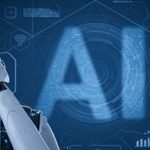From its simple beginnings, modern AI training has transformed immensely, evolving from basic algorithms to intricate neural networks and deep learning techniques. As AI systems advanced, the demand shifted from just bulk data to data with depth and detail. According to the research, the global data annotation market is projected to be worth USD 8.22 billion by 2028. A significant contributor to this transformation has been tools like the reliable COCO annotator, which ensures data is structured and contextual for advanced processing. Other tools include LiDAR and speech annotation.
In the contemporary AI landscape, diverse data and specialized annotation are paramount. Diverse data ensures automatic labeling systems are well-rounded and unbiased, capturing a breadth of scenarios and perspectives.
Specialized annotation, meanwhile, offers depth, pinpointing nuances and contexts, ensuring AI understands data beyond surface value. In short, for AI to be both comprehensive and precise, the combination of diverse data and meticulous annotation is essential.

Understanding the COCO Dataset
The COCO (Common Objects in Context) dataset is a cornerstone in the realm of computer vision. Utilizing COCO dataset format annotation was originally conceived to facilitate robust object detection, segmentation, and captioning research. COCO’s roots trace back to a collaborative effort among tech researchers aiming to standardize the training and evaluation of computer vision models.
Applications and implications for businesses
- Image Recognition:
- E-commerce: Using the COCO keypoint annotation, businesses can enhance product searches and recommendations through precise image tagging.
- Security: Advanced image recognition aids in real-time threat detection, bolstering security in various settings.
- Natural Language Processing (NLP):
- Chatbots and Virtual Assistants: With the assistance of voice annotation services, chatbots can understand queries with visual context, making interactions smoother.
- Customer Service Automation: Merging image recognition with NLP enables faster and more accurate automated customer responses.
In essence, leveraging the COCO dataset can lead to enhanced operations and customer experiences across industries.
The Power of LiDAR Data Annotation
LiDAR, standing for Light Detection and Ranging, employs pulsed laser light to gauge distances on the Earth’s surface through remote sensing techniques. With the availability of LiDAR annotation services, it works by emitting laser beams and then measuring the time it takes for the beams to return after they bounce off objects. This data, when processed, can create accurate 3D representations of the scanned area.
Business applications and implications:
- Autonomous Vehicles: LiDAR data annotation forms the backbone of self-driving car technology, offering detailed environmental mapping that enables these vehicles to navigate safely and avoid obstacles.
- Urban Planning and Development: With the ability to capture high-resolution topographic data, LiDAR is invaluable for urban planners. It aids in flood risk assessment, infrastructure design, and more.
- Specialized Sectors: In agriculture, LiDAR helps in monitoring crop health and optimizing irrigation. In mining, it aids in surveying and assessing potential excavation sites, ensuring safety and efficiency.
Challenges and future prospects
While LiDAR offers remarkable precision, it’s not without challenges. Weather conditions can affect its accuracy, and its high costs can be a barrier for many industries. However, with the rapid advancements in technology, we can expect more affordable and weather-resistant LiDAR systems in the future, further expanding its applications across industries. To dive deeper, check out this insightful article on outsourcing LiDAR annotation by oWorkers.
The Emergence of Speech Annotation Services
Speech annotation services such as those focusing on professional speech annotation, involve labeling and categorizing audio data. This specialized approach to voice data makes it comprehensible to AI models.
For AI to effectively understand and process human speech, raw audio isn’t enough. It needs to recognize nuances, accents, and intent, all of which voice annotation services provide.
Business applications:
- Voice-activated Devices: Devices like smart speakers rely heavily on high-quality speech data to function effectively.
- Call Centers: Optimizing call responses and gauging sentiment is possible through annotated voice data.
- Accessibility: Annotated speech data plays a pivotal role in building tools for differently-abled populations, aiding in communication.
- Multilingual Business: With the rise of globalization, businesses can use speech annotation services to venture into non-native markets with ease.
Integrating AI Training into Business Strategies
In the dynamic landscape of AI training, businesses confront a strategic crossroads: harness internal resources or lean on external expertise. While both pathways have their merits, they differ significantly in their approach, benefits, and challenges.

In-house
- Tailored Solutions: With direct oversight and control, businesses can ensure that AI models are meticulously crafted to meet specific organizational goals.
- Data Protection: Keeping processes internal fortifies data operation, security, reducing exposure to external threats.
- Investment Intensity: This route demands substantial commitments in terms of talent, infrastructure, and time, making it a weightier option financially.
Outsourcing
- Specialized Proficiency: Engaging third-party providers taps into a reservoir of niche expertise and industry experience, potentially fast-tracking projects.
- Flexibility & Economy: Outsourcing can be cost-efficient, especially in the short term, and offers the agility to adapt to project-specific needs.
- Quality & Privacy Caveats: While generally efficient, outsourcing may sometimes pose challenges related to data privacy and maintaining consistent quality standards.
In essence, the decision pivots on a company’s immediate priorities, available resources, and long-term AI vision.
Bottom Line
As businesses traverse the digital frontier, AI emerges not just as a tool but as a catalyst, reshaping operations, driving innovations, and creating unparalleled competitive advantages. With its power to revolutionize processes and customer experiences, businesses that harness AI’s full potential are well-poised to lead in their respective industries.










